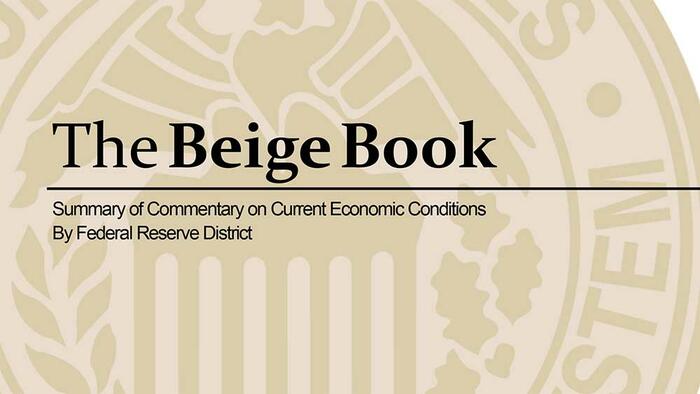


Extending the dismal pace of US economy growth (if not outright contraction) observed in last month's Beige Book, which was validated by the sharp drop in Q1 GDP growth which tumbled to just 1.6% from more than 3% in Q4 and is expected to slide further to 1.3% tomorrow, moments ago the Fed published its latest Beige Book, which found that while economic activity expanded from early April to mid-May "as conditions varied across industries and Districts", just like last month, most Districts reported "slight or modest growth", while "two noted no change in activity."
That's the good news. The bad news was far more extensive and worrisome and can be summarized as follows: "Negligible Job Gains", "Lower Discretionary Spending", "More Pessimistic Outlook." Here are the highlights:
Elsewhere, nonprofits and community organizations cited continued solid demand for their services, and manufacturing activity was widely characterized as flat to up, though two Districts cited declines.
Meanwhile, tight credit standards and high interest rates continued to constrain lending growth. And while housing demand rose modestly, and single-family construction increased, there were reports of rising rates impacting sales activity.
Even uglier, the Beige book warns that conditions in the commercial real estate sector softened amid supply concerns, tight credit conditions, and elevated borrowing costs.
There was more cheer in the energy sector, where activity was largely stable, whereas agricultural reports were mixed, as drought conditions eased in some Districts, but farm finances/incomes remained a concern.
Taking a closer look at the two key Fed mandates, jobs and inflation, we first turn to labor markets where the Beige Book made the following downbeat observations:
As for prices, it appears that we are on the edge of disinflation if not outright deflation:
Finally, and this is probably not a shock to anyone, the report concludes that "overall outlooks grew somewhat more pessimistic amid reports of rising uncertainty and greater downside risks."
For those curious what individual regional Fed had to say, here is a snapshot:
More in the full beige book
